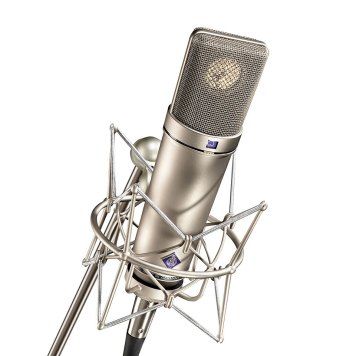TARGETTED LEARNING OUTCOMES OF THIS PLAN:
CLO3: Investigate and effectively implement project management processes as guided by industry practices
– You research and determine industry best practices for your discipline, and then justify your choices
– You define the scope of the project (including what is in scope / out of scope / desirable, objectives, deliverables, requirements)
– You create a schedule that indicates at least who does what, when
– You identify the important risks to the project and a mitigation plan
– You identify and define the methodology employed in the project
– The planning of your project is effective and actionable (it is clear enough what is going to be done so that another team can execute the project based on the plan)
LO2: Plan aesthetic and technical outcomes of creative work
– Your planning and goals can be demonstrated in a blog or production planning meeting observed by the facilitator.
– The goals should be in reference to the desired audience reaction and similar professional released works that obtain the same intended result.
LO15: Deliver product within a specified budget and time frame
– You will need to keep your production within a hypothetical budget and construct an appropriate timeline to suit the budget.
– You must justify any expense that exceeds your original budget
_______________________________________________________________________
PROJECT BRIEF (LO2):
For my major project i’m going to do 2 original tracks, 1 remix and 1 cover, the cover being a completed version of my re-interpretation to a standard which i’ll release to Soundcloud and Spotify.
The aim for my major project is to submit a few tracks as singles and finished to a releasable standard which I will then be able to upload and release to platforms that’ll suit each track. My motivation behind the remix is to release it as a free download on Soundcloud and send it to online blogs to get some notice and followers. With the original tracks i’m hoping to get the tracks signed by a local or international label, this will give me the opportunity to get notice by potential management. The remix will be marketable towards DJ’s to play out, this could also give out notice to my original track (Art Of Falling). The originals can be marketable and relevant for Triple J, hopefully I can gain support by them on the releases. The target market for the remix is DJ’s and the originals and cover will be radio friendly listeners.
Tracks:
NuYuh – Art Of Falling (VIP Remix) – This is a remix I did with a friend Jack Duggan of my original. The genre of this track is a House type song, marketable to DJ’s as it fits within the 120-130 BPM range.
NuYuh ft. Sam Adebajo – Crown (Take Me Home) – This is an original featuring my friend, not mixed. This original track fits in the Tropical House genre, it would be marketable for me as a performance and also as a radio friendly song.
NuYuh ft. Michael Hobbs – Stronger – This is an original track featuring Michael from my cohort. This original track also fits in the Tropical House genre, it would be marketable for me as a performance and also as a radio friendly song.
NuYuh – Treat You Better (ft. Matisse Langbein) – This is a cover of Shawn Mendes track Treat You Better that I used for my re-interpretation which I want to complete to a standard which I want to release. This cover track has a blend between Tropical and Progressive House, the difference is mainly the use of synths that I use in this track. It would be marketable for me as a performance and also as a radio friendly song.
I’m going to be recording all the final vocals of my tracks in the Audient 8024 because I believe that the Avalon Compressor (Vt-747sp) will give me the right tone that i’m looking for. The Avalon is very well known by many producers around the world and with past experience using it on my first single (Art Of Falling) i’ve found it to give me a clean sound and tone. Once recording the vocals if I have time in the same session, I will pick through the vocal takes with them to get the best performance. Then i’ll take it home and further process them within my DAW using various compressors, EQ’s and reverbs.
____________________________________________________________________________
PROJECT TEAM MEMBERS, ROLES & RESPONSIBILITIES (CLO3):
Isaac Nichol (Producer):
– Composition
– Sound Design
– Recording
– Marketing
– Mixing
Tyson Ida:
– Mastering Engineer of Art of Falling (VIP Remix)
Ben Figgins:
– Mastering Engineer of Treat You Better
Sam Adebajo:
– Vocals
Matisse Langbein:
– Vocals
Michael Hobbs:
– Vocals
____________________________________________________________________________
PROJECT MILESTONES (CLO3):
Complete Mixing of Art Of Falling (VIP Remix) – 20/07/16
Send final Mix (-6db Wav) of A.o.F to Tyson Ida (Mastering Engineer) – 22/07/16
Record Vocals for Stronger ft. Michael – 26/7/16
Mix Vocals for Stronger ft. Michael – 31/7/16
Record Final vocals & Harmonies for Stronger – 4/8/16
Mix vocals for Stronger – 5/8/16
Get some feedback on Stronger – 5/8/17
Record final vocals for Treat You Better with Matisse – 6/8/17
Mix vocals for Treat You Better – 8/8/17
Complete mixing of Treat You Better – 10/8/17
Send (-6db WAV) of Treat You Better to Ben Higgins (Studio 301)
____________________________________________________________________________
TEAM MANAGEMENT & SCHEDULING (CLO3):
(Here you will need to provide a link to an online resource that will be used for real-time management and scheduling of tasks that all project team members have editable access to for project tracking.
This must include a list of every single task that needs to be performed, the responsible team member or members, a deadline date for each task and a way of highlighting the status of tasks: inactive, in-process or completed.
Google sheets tied in with a shared Google calendar would be your best resource for this)
For advanced users, utilitarian websites such as Asana would prove quite useful.
____________________________________________________________________________
TECHNICAL FRAMEWORKS (CLO3):
(Here you will need to provide a link to an online resource that will be used for collation, retrieval and editing of project data files and documents. All your files and documents should be stored on this resource and all project team member should have access to this to foster parallel workflow and real time project management.
Here is a Google Drive link where I will provide all my dated previews of the songs I’m working on for my Major Project.
https://drive.google.com/open?id=0B-8ttXSXihTATjBmOWpJZTBETXc
____________________________________________________________________________
RISK MANAGEMENT (CLO3):
There are dozens of potential risks for a medium scale audio project, list as many as you can think of that relate to your project)
Your team must identify at least 10 risks per team member. A team of 3 will have 30 risks minimum.
Here are some potential risks that may affect my project:
Loss of data
Time management
– Studio time
– Mixing
– Mastering
Mastering engineers not finishing mix in time
Well being of artists
Well being of self
Graphic Designer not providing all three artworks
____________________________________________________________________________
BUDGET (LO15) AND JUSTIFICATION (LO2):
Give an exhaustive list of spaces, equipment, times, and so on, that will be needed to complete the project. From your own research, give an estimate of how much each item would cost in a professional production project, as well as examples of how the overall budget could be minimized (where possible).
No specific budget will be needed for the production on my tracks but only in the mixing and mastering stages. I will be using SAE’s equipment for all the production and mixing stages.
Equipment:
AKG-C414
Avalon Compressor Vt-747sp
Presonus Audiobox
VSTs & DAWS:
Ableton Live 9
reFx Nexus
CLA Vocals
____________________________________________________________________________
TARGET OUTCOMES:
Learning Outcomes
CLO1 – Critically reflect on how you (and your team as appropriate) have performed in relation to your behaviour, the processes you employed, and the outcome of the project(s)
CLO2 – Effectively reflect on topics related to your discipline and your craft and how you (or your team) have performed in relation to these
CLO3 – Investigate and effectively implement project management processes as guided by industry practices
CLO4 – Execute a project in accordance with a project plan
CLO5 – Produce outputs that successfully meet the brief set by the facilitator(s).
CLO6 – Engage in interdisciplinary practices
CLO7 – Develop and sustain effective teamwork skills
CLO8 – Effectively communicate what your intentions are for your project
CLO9 – Demonstrate effective publishing techniques appropriate to the audience and creative intent.
LO1 – Critique technical and musical aesthetics necessary for advanced levels of production
LO2 – Plan aesthetic and technical outcomes of creative work
LO3 – Demonstrate advanced technical and aesthetic production techniques appropriate to creative media products
LO4 – Actively participate in coaching of artist perfomances
LO5 – Implement performance correction techniques with specialised tools
LO6 – Adapt methods for producing work in limited resource environmen
LO7 – Adapt sound files into new audio assets
LO8 – Repair audio signals to improve sound quality
LO9 – Implement sound design assets in a variety of linear or non-linear media
LO10 – Mix productions in a calibrated environment
LO11 – Mix sound assets in surround sound
LO12 – Implement mastering signal processing and workflows
LO13 – Revise production process through continuous reflection of aesthetic outcomes
LO14 – Deliver audio complying with industry loudness metering standards
LO15 – Deliver product within a specified budget and time frame
LO16 – Demonstrate an awareness of contracts and agreements for sound production work
LO17 – Reflect on aesthetic outcomes of own production work against commercial products
LO18 – Demonstrate advanced signal flow knowledge and skills
Auxiliary Outcomes (examples of outcomes not listed in Module Guide)
AO1 – Work is demonstrated in a public space
AO2 – Work is published publicly online gaining feedback from external parties
AO3 – Work is successfully licensed to publisher




















